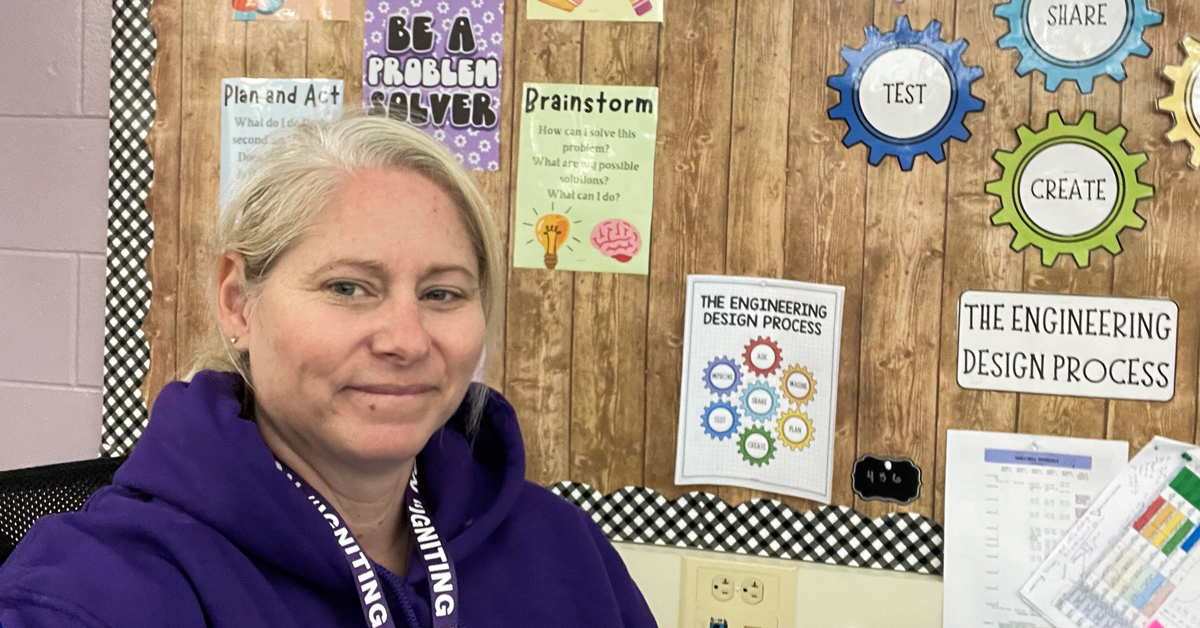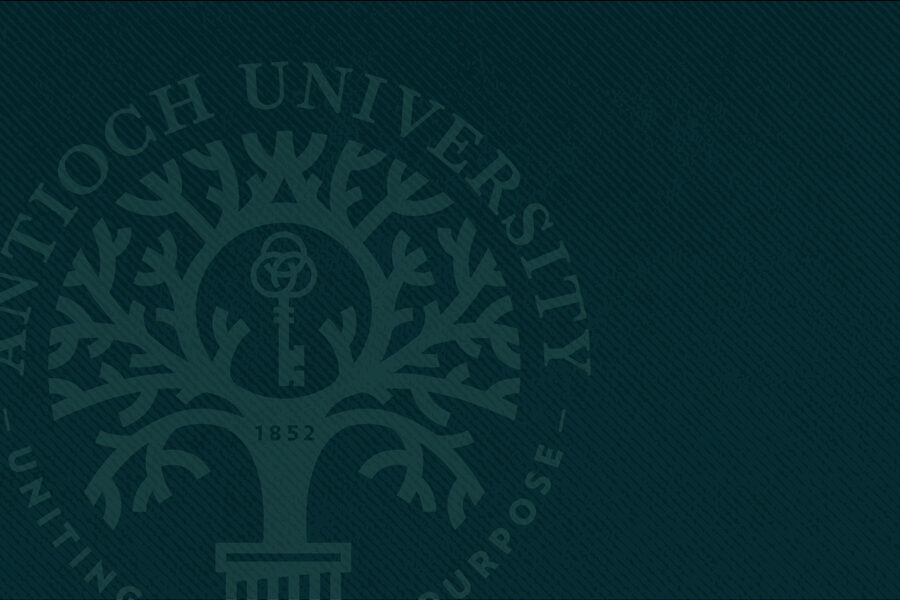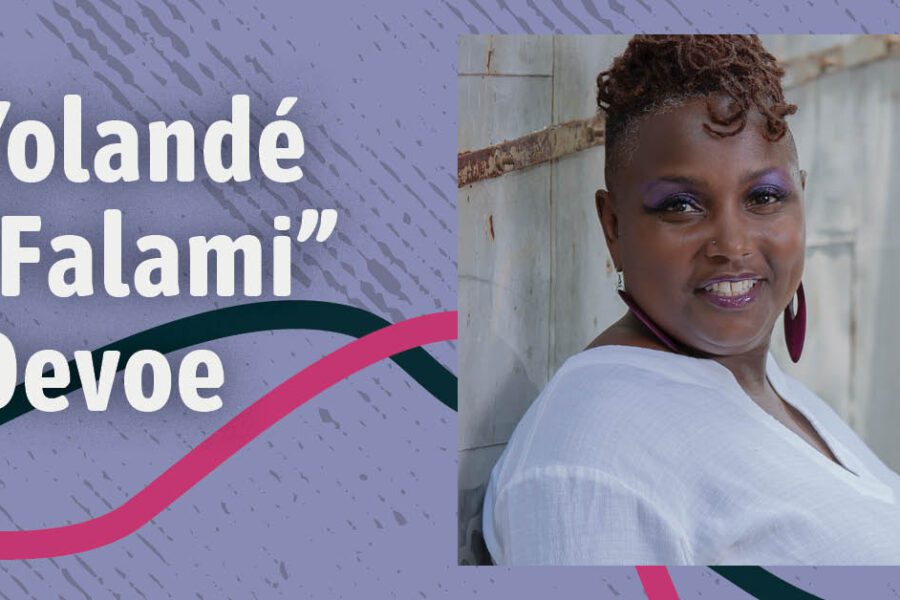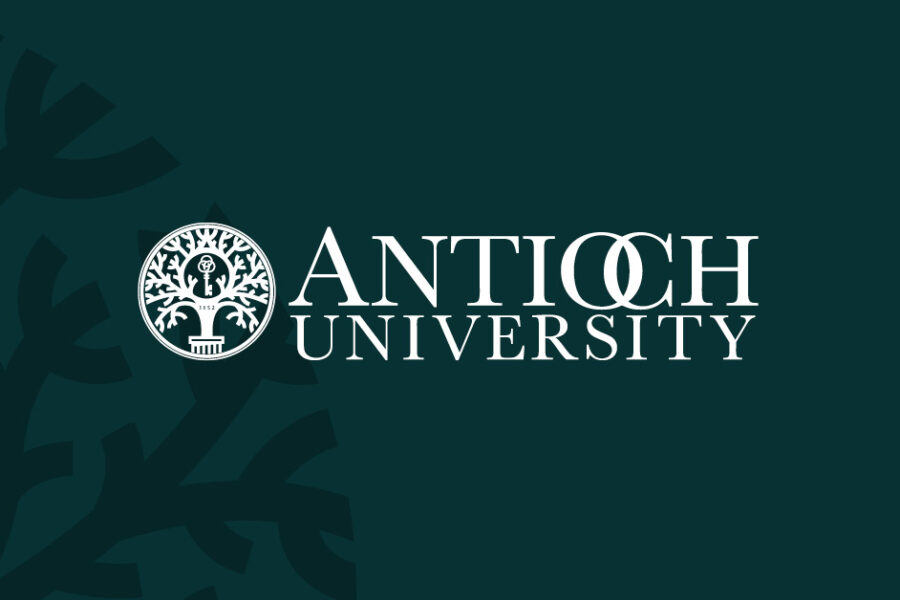We live in a time of tech overload. New apps, software, and other tech tools are constantly advertised, promising to improve our lived experiences. And for educators the situation is often even more extreme: the 2024 edition of a popular teaching resource lists more than 750 tools grouped into 50 categories.
For Rachel Walton, this is both a challenge and an opportunity. Walton, a 2017 graduate of the MEd for Experience Educators, today teaches the course “Technology Tools in the Classroom for All Learners” in that same program. (Read our 2022 profile of Walton.) The course offers a lifeline to educators overwhelmed by the options.
“It doesn’t matter what the tool is,” Walton says. “It’s the intentionality of how and why you’re using it.” She explains that educators—even ones with decades of classroom experience already behind them—often come into this course apprehensive. They are concerned about the sheer amount of available technology. She says their first reaction is to think, “Oh my God, I’m going to have to learn all this stuff.” But technology isn’t just about adapting to a new piece of software, she says. “Really in the end you just have to learn how to shift to what is really effective teaching and what is going to be the most impactful for the learners that are in front of you—and hopefully save yourself some time in the process.”
Critical Analysis of Technology
Knowing how to evaluate the available tech options for a classroom, or how to appropriately find new options, is a skillset all on its own. As Laura Thomas, Core Faculty and Director of the Experienced Educators program, says, the tech tools course “was created in response to the techno-stressors that teachers face today,” when, as she puts it, they are “overrun with new technology.” The great quantity and widely variable quality of new tools available can make it nearly impossible for classroom teachers to decide where to place their attention.
“Technology Tools in the Classroom for All Learners” begins by having teachers explore how technology can help them solve real problems in their own classrooms. Then, says Thomas, it “provides a structured, supportive environment in which they can gain new skills with the tools they decide they want to use.”
Walton has taught this course since 2018. The six-week, asynchronous, online course is offered every summer, to coincide with many teachers’ summer breaks, and it is designed to help participants identify resources available to them in their schools and assess how to best use those tools in their own instruction and thoughtfully select new resources. The course examines how technology can support not only instruction and assessment, but also building learning communities that truly serve all learners. And it aims to allow longtime educators to become intentional with the technology choices in their classrooms through the use of Problem-Based Learning, class discussion, online postings, and social media.
A Legacy of Tools that Transform
Walton’s decision to become a teacher stemmed from her childhood, when she had many hands-on learning experiences of her own, including helping out on a working dairy farm and shadowing her father as he created a self-sustaining home. Growing up, she saw again and again how important tools were. She was surrounded by family members who were teachers by profession and also by family members who taught her by allowing her to participate in experiential learning of their trades.
Her grandmother was the catalyst for some of her earliest memories of learning. As Walton explains, “I loved the way she interacted in the world and the number of people that she knew and inspired.” Whether it was sewing or baking, her grandmother taught her and her cousins “how to take what we had and make something new with it.” That lesson of transformation stuck with Walton.
The most hands-on learning experience came as she spent time on her family’s organic dairy farm in northern Massachusetts. Walton says that it’s “all those things I learned on the farm, working alongside my father building a house, and watching my mother raise sheep and have their wool spun so that she could weave with it, that I now integrate into my current teaching.”
Today, beyond teaching at Antioch, Walton is a STEAM and STEM griculture teacher in Rumson, New Jersey. STEAM stands for Science, Technology, Engineering, Art, and Mathematics—a hands-on learning approach that combines these different areas to foster problem-solving, encourage inquiry and collaboration, and foster discussion among students. Having experiential STEAM experiences gives students space to engage with creativity, critical thinking, and innovation.
The students in Walton’s middle school STEAM class engage in a wide variety of active learning including making kombucha, identifying fungi, hatching chickens and caring for them, holding farmers markets, and running the Forrestdale Farm which includes traditional soil gardening, hydroponic gardening, and aquaponic gardening. Her students also learn about the different requirements for growing and harvesting healthy vegetables in a sustainable way, and they study the latest advances in agricultural technology
Lifelong Learner, Lifelong Antiochian
Living in New Hampshire as a young adult, Walton heard a lot about Antioch University, and she met a variety of alumni. “I was very impressed with the unique and unusual programming that they offered,” she explains. And she was especially drawn to the way Antioch University was “learner-focused and really worked with people to identify their own path and help them along that process.”
So when she wanted to return to school to advance her education she thought Antioch might be just the place. She ended up completing the EdD for Experienced Educators, Self-Designed program in 2017. The self-designed curriculum she created, which centered on her passion for using the STEAM teaching methodology in K-12 classrooms, inspired the creation of the Certificate In Integrated STEAM Education, of which Walton became the first graduate, as well as the Integrated STEAM Education Concentration in the MEd program, both of which are offered at Antioch’s New England campus.
When Walton returned to Antioch in 2020 to complete additional coursework to graduate with an Integrated STEAM Education certificate, she recalls thinking “how fantastic [it was] to be able to return to Antioch and be the first to be awarded that certificate.”
Thomas agrees that this was a full-circle moment—and a testament to her description of Walton as “a force of nature.” She explains, “Once Rachel figures out what she wants or needs to learn, she’s pretty much unstoppable.”
And this learning is a continuing process—and one that has led her back to Antioch now as an instructor. “She’s an active learner—both as part of the larger educational community, our Critical Skills leadership team, and as a teacher,” says Thomas. “She seems to apply everything she learns to everything she teaches, which means that the Tech Tools course is always evolving, even while she’s teaching it.”
A Pivotal Course for Experienced Educators
One student of “Tech Tools For All Learners,” Christel Workman, says that coming into the class she found herself apprehensive, because, as she explains, “technology tools were not my strength.” After taking the course, though, she found it useful and demystifying—an outcome she attributes to a few key parts of the course: “Rachel’s guidance [and] responsiveness, amazing classmates, and meaningful effort.” Workman reports that now she has “a broader knowledge of using technology in the classroom and in life.”
Workman is not alone in her positive takeaways from this course. Tamara Tallman—who works as a Co-Coordinator of Student Teaching and Clinical Specialist of Elementary and Early Childhood Education at The College of New Jersey—recalls that the course was pivotal in strengthening her role as an educator. As she explains, “Integrating e-portfolios into my classroom has revolutionized my teaching practice, transforming my relationship with technology from a tool of convenience to a powerful catalyst for student growth and reflection. As a teacher, I’ve seen firsthand how e-portfolios empower students to take ownership of their learning journey, showcasing their progress in ways that traditional methods simply cannot capture.”
Susanna Hargreaves also credits the course with being transformational for her teaching, saying the course made her a “better teacher and resource to [her] students and learning community.” Hargreaves continues, “Walton’s class on Tech Tools for ALL Learners has transformed teaching into an easier, more immediate, and truly possible experience, empowering educators to reach every student. [Her] approachable, hands on, and positive teaching style made me feel very comfortable and confident. I believe all educators will benefit from this class.”
Seeking Technology that is Transformative
Because accessibility of technology varies significantly from classroom to classroom, as do the needs of students, Walton always begins the course by asking the educators in her class to create an inventory of all technology tools (both hardware and software) that they have access to including devices provided by their school and personal devices they have access to that could be used to create resources. She then asks them to highlight any challenges they face with access to resources, support, time, and expectations. Participants then gauge their comfort level with each tool and highlight their top 3 tech resources—as Walton puts it, “the ones you couldn’t live without.” While new technologies are introduced both from Walton and other participants in the course, including the 30 Tech Tools in 30 Days Challenge, the focus is less on the specific tech tool being used, and more on how and why the tool is used.
Among the many deep considerations Walton asks her students to consider in this course, is a reflection on their initial inventory of tech tools. She has students ask themselves to consider how those tools can be used to support all of the learners in their classroom, and how they can shift their environment or instruction to better meet the needs of all learners. She also asks them to consider if their tech tools support a variety of learning styles, cultures, and physical/intellectual needs, and if their classroom design is appropriate for the age group(s) that they work with.
To examine how and why they choose to use a particular technology, Walton has her students use the SAMR Model. SAMR stands for Substitute, Augmentation, Modification, and Redefinition. These are four levels, and Walton has her students consider how classroom technological tools can build upon each other to either enhance or transform a student’s learning experience.
This model suggests that transformative educational experiences do not occur until educators choose tools that offer modification by significantly redesigning a task, or redefinition, which means creating new tasks or experiences that were unimaginable prior to the implementation of the technology.
“I think that a lot of teachers have lived on the bottom level… redefinition and modification,” says Walton. “So one of the requirements of my unit is that they hit either M or R, so they have modified using the technology in such a way that it is now valuable.”
As Walton explains, “It’s not just using a tool to use a tool, it’s not replacing a worksheet. Now we’ve leveled up.” And she goes to say that when it comes to redefinition, this can mean as dramatic of new opportunities as “being able to interact with people on the other side of the world, or being able, if you can’t get live people, to go and see something using virtual reality that you would never have the opportunity to do with a classroom full of students.”
This intentionality in use of technology to transform, not just augment, educational experiences is so integral to this course for Walton that she says, “I feel like if you get through the course, and you get to this place, and you’re still thinking at [the level of] redefinition and modification, I missed the message.”
By the end of her course, Walton reports that most students are at least able to come up with one thing where they end up saying to themselves, “Okay, if I work this tool in this way, I can create a learning experience that didn’t exist before I had that tool.”






